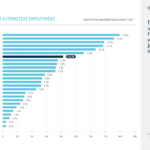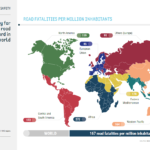Have you ever wondered how much the U.S. Federal Government spends on the various social benefit programs?. My analysis shows that federal spending on social benefits is rising fast.
Source: Flow of Funds Accounts of the United States report, 1Q-2009Â & BEA NIPA tables
Data for 2009 is for the first quarter annualized.
The huge spike in the early 1930s is due to the New Deal program that was implemented. Federal social spending has been increasing overall since 1945. In 1945Â it was about 10%. This year social spending will account for 62.6% of federal government’s receipts (revenues). From a recent of low of 44.8% in 2005, the figure has been steadily increasing each year and reached 62.6% now. This is unprecedented since the last time social spending reached very high levels was in 1931 at 89.5% – which was the all-time high.
The high social spending by the Feds shows the severity of the current recession. As unemployment rises more and more folks depend on the government welfare programs such as unemployment insurance, medicaid, etc. for survival. In the long-term this is not good for the economy as more resources of the federal government goes into supporting programs which were originally created to be used as a stopgap temporary arrangement to be used as a last resort.But due to the recession and rising unemployment levels, people who are unemployed are using the most of all government social benefits. This is evident from the rising exhaustion rate of those receiving unemployment insurance. The exhaustion rate measures the number of those unemployment insurance beneficiaries who run out of their maximum allowance.This number stood at 49.23Â (US totals) for the month May according to the Department of Labor data.
If the current receipts of the federal government continues to go down and the social benefits spending increases continually over the next few quarters, then the feds will borrow more to fund the gap causing the budget deficit to go higher.



